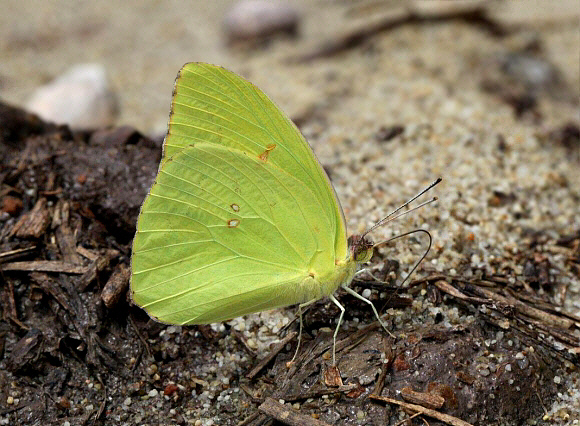
Introduction
The subfamily Coliadinae includes the Sulphurs, Grass Yellows, Clouded Yellows and Brimstones. In the neotropical region there are about 70 species.
The genus Phoebis comprises of 8 species, most of which are strongly migratory in behaviour. They are widely distributed across the region, with 3 exceptions : avellaneda which is endemic to Cuba, editha from Hispaniola, and the Ecuadorian species bourkei.
All Phoebis species are sexually dimorphic. Males are bright yellow above, with a thick patch of matt androconial scales around the forewing cell. Females are paler on both wing surfaces.
Both sexes of sennae are subject to variation. Many examples are entirely devoid of markings, but others are quite heavily mottled with brown on the underside, and have brown-edged white stigma at the end of the cell on both wing surfaces.
Phoebis sennae is the commonest and most widely distributed species. It is found from the southern states of the USA to Peru, Chile, Bolivia and Argentina. It also occurs on most of the islands in the Caribbean Sea. There are 4 named subspecies.
Habitats
As with other Phoebis species, sennae is highly migratory in behaviour and can be found in a huge variety of open habitats e.g. along river-beaches in rainforest, in clearings and glades in deciduous woods, and in grassland, farmland and suburban habitats. It can be found at altitudes between sea level and at least 1500m.
Lifecycle
The eggs are laid singly on the underside of leaves of the foodplant Cassia ( Caesalpinaceae ). The young larva is yellow, covered with tiny black dots. Later it becomes more greenish, with blue bands between the segments. The fully grown larva is yellowish-green, covered with black dots, and has a yellow lateral line. Above the line on each segment there is a series of short vertical blue striations. The spiracles are also blue. The pupa is beautifully shaped, with an arched body and projecting wing pads. When newly formed it is pale greenish-yellow, but this soon changes to become pinkish. It can be found attached to stems of the foodplant, and looks like a discoloured withering leaf.
Adult behaviour
Males can be found mud-puddling at damp patches of ground, often aggregating with other Phoebis species. The paler females are seen less often, and are usually observed in flight, or when visiting red or orange flowers such as Lantana. There is no courtship ritual – the females are intercepted in mid-flight and forced to the ground where copulation takes place immediately.
